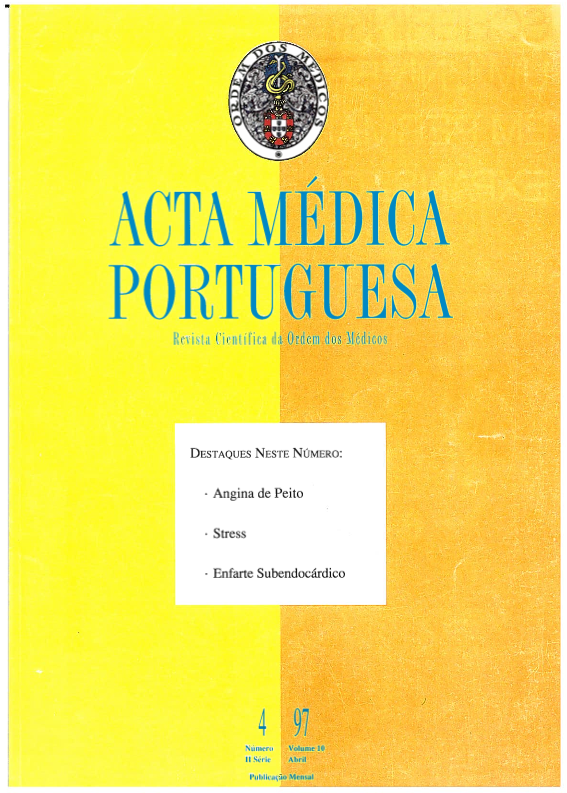Influência da disfunção ventricular esquerda na dessaturação nocturna em doentes com bronquite crónica enfisema e PaO2 55-70 mmHg.
DOI:
https://doi.org/10.20344/amp.2409Resumo
The possibility of nocturnal oxygen desaturation (NOD) in patients with chronic bronchitis and emphysema (CBE) even with basal hypoxemia greater that 55 mmHg is well recognised. Nocturnal hypoventilation is admitted as the main cause for this NOD. In this study we evaluate how the presence of left ventricular dysfunction (LVD) could aggravate NOD. Thirty-six patients with CBE and basal stabilised PaO2 55-70 mmHg underwent right heart catheterisation and polysomnographic study. NOD was defined as more than 30% of total sleep time with SaO2 less than 90%; LVD was defined as capillary pressure greater than 15 mmHg. Six patients were excluded from analysis because of sleep apnoea syndrome. In the remaining 30 patients (20 men, 10 women; mean age = 65.88.6 years; mean FEV1 = 0.970.31 litres; 43.316.6% predicted; mean basal PaO2 = 61.83.6 mmHg) 8 had LVD and 18 and NOD. Patients with NOD had a greater diurnal level of hypoventilation (basal PaCO2 = 44.63.8 vs. 414.1 mmHg; p = 0.025). Patients with LVD, despite identical diurnal pulmonary function, showed a significantly p < 0.05) greater degree of NOD (mean nocturnal SaO2 = 84.56.4 vs 89.52.5; minimal nocturnal SaO2= 68.517.3 vs. 79.47.8; Time spent with SaO2 < 90% = 78.833.7 vs. 43.138.7). We conclude that the presence of LVD in patients with CBE and PaO2 55-70 mmHg aggravates the intensity and the time spent with NOD, probably because of aggravation of hypoventilation or ventilation/perfusion mismatching.Downloads
Downloads
Como Citar
Edição
Secção
Licença
Todos os artigos publicados na AMP são de acesso aberto e cumprem os requisitos das agências de financiamento ou instituições académicas. Relativamente à utilização por terceiros a AMP rege-se pelos termos da licença Creative Commons ‘Atribuição – Uso Não-Comercial – (CC-BY-NC)’.
É da responsabilidade do autor obter permissão para reproduzir figuras, tabelas, etc., de outras publicações. Após a aceitação de um artigo, os autores serão convidados a preencher uma “Declaração de Responsabilidade Autoral e Partilha de Direitos de Autor “(http://www.actamedicaportuguesa.com/info/AMP-NormasPublicacao.pdf) e a “Declaração de Potenciais Conflitos de Interesse” (http://www.icmje.org/conflicts-of-interest) do ICMJE. Será enviado um e-mail ao autor correspondente, confirmando a receção do manuscrito.
Após a publicação, os autores ficam autorizados a disponibilizar os seus artigos em repositórios das suas instituições de origem, desde que mencionem sempre onde foram publicados e de acordo com a licença Creative Commons









